We need to legitimize Modern Hebrew and then advocate the heck out of teaching it, the sooner the better.
Maybe this should have been my very first ‘cornerstone’ blogpost, but as a Jew, Hebrew speaker and lover of language, I needed no convincing of the value of improving and supporting Hebrew instruction.
 Plus, I really wasn’t aware of the turmoil swirling around the Hebrew programs in my own back yard!
Plus, I really wasn’t aware of the turmoil swirling around the Hebrew programs in my own back yard!
There are urgent issues particular to Modern Hebrew in the Diaspora that are worthy of our attention. One such challenge regarding Hebrew’s legitimacy is, does it qualify as a World Language?
This is an important question as it establishes a raisons d’être for Modern Hebrew instruction in and beyond the supplementary (synagogue-based) or Jewish day-school setting, for example, in public high school World Language Departments. (Where I live, several public high schools offer Modern Hebrew; my son is a student in one of them.)
I first heard this concern about Hebrew’s legitimacy as a World Language (like Spanish, French or Mandarin), from a dear friend and champion of my recent foray into Hebrew instructional reform. Her beef is that Modern Hebrew is the national language of only one small country, Israel. Furthermore, she argues, you don’t really need Hebrew there, as so many Israelis are fluent in English. International diplomacy and business could survive without it, she claims; not so with the other more widely-spoken languages.
Well, here’s my take. Yes, Modern Hebrew most definitely is a World Language, though technically it’s only the national language of Israel. (See: ACTFL position on ‘What Is A World Language?’) It’s a special case, though, since it’s widely studied and spoken by (mostly) Jews in the Diaspora, plus the many Israelis who travel and live across the four corners of the earth. Professor Wikipedia claims there are over 9 million Hebrew speakers worldwide, with over 5 million residing in Israel. Modern Hebrew lives in rich, robust, and widely appreciated literature, song, poetry, film, and journalism. Perhaps interest in it and devotion to it propel Hebrew to World Language status, despite it’s limited geographical imperative. The opposite is also true; if interest in and devotion to Hebrew flags, so will its status in the minds of potential teachers and their students. We’ve observed this inverse corollary on Chicago’s North Shore over the past few years, as several of the public high school Hebrew programs face cuts due to a dearth of certified Hebrew teachers, and insufficient numbers of interested Hebrew students.
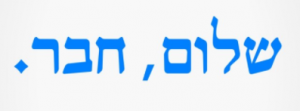 Lamentably, it looks as though Evanston Township High School, the first public high school in the area to offer Hebrew, may phase out its almost 50-year-old Hebrew program at the end of this academic year. (Read article here.)
Lamentably, it looks as though Evanston Township High School, the first public high school in the area to offer Hebrew, may phase out its almost 50-year-old Hebrew program at the end of this academic year. (Read article here.)
The reasons for the decline of its pioneer program and others are numerous, including, for teachers:
*Onerous English language exams for teacher certification are discouraging to potential native-Hebrew candidates;
*Hebrew teaching positions are often part-time (no benefits) and/or require travel between schools due to low enrollment, making the positions less appealing;
*Hebrew teachers are singletons in their buildings or districts, with no opportunity for collegial support or collaboration;
*Since they don’t yet exist, teachers can’t rely on Hebrew-specific teaching standards, proficiency guidelines, and articulated curricula (from level to level) to guide and buttress their program. (Existing curricula/textbooks don’t reflect SLA research, are uninspired and unappealing;)
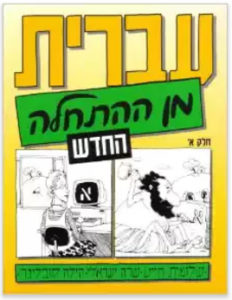
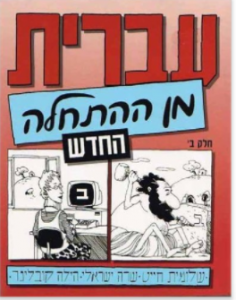 *Since they don’t yet exist, teachers can’t rely on Hebrew-specific teaching support networks, for coordination of Hebrew pedagogy and instruction;
*Since they don’t yet exist, teachers can’t rely on Hebrew-specific teaching support networks, for coordination of Hebrew pedagogy and instruction;
*Since they don’t yet exist, teachers can’t rely on Hebrew-specific or (to the best of my knowledge) electronic resources such as listservs (like the moreTPRS yahoo users’ group, or, say, a Hebrew teachers’ Facebook group), blogs, PLCs, or teacher demonstration videos (See my exemplar here!) Mine is the only Hebrew-as-a-foreign-language teachers’ resource blog I know of so far.
*Teachers receive inadequate (or NO) training in Second Language Acquisition theory and have few, if any, professional development opportunities (workshops, conferences, peer observations, etc.) to network and learn Hebrew best-practice instructional strategies.
* Teacher preparation for Hebrew instruction at the university level is outmoded/substandard;
*Teachers are discouraged by unremarkable student outcomes and near flat progress, after an inordinate amount of time and energy invested.
Sounds dismal, I know, but read on and don’t be dismayed.
For students, here are some of the high school Hebrew hurdles:
*Most junior high school students (here and in many suburban districts) have already taken two years of World Language (often Spanish or French) by the time they enter high school, enabling incoming freshman to place into level 2 language classes. It’s hard to pass up this accelerated status, and parents often encourage their kids to ‘continue with what you’ve already started,’ rather than switch to Hebrew;
*It takes devotion to Hebrew, the willingness to step down a level, as well as to step away from your peers, to elect Hebrew 1 as a freshman (Hebrew 2 in some cases, depending on supplementary Hebrew school programming or receiving teacher’s differing expectations);
*Many students perceive Hebrew as more difficult than, say, Spanish or French, because of its non-Romanized alphabet. This lowers their expectations for progress and proficiency;
*Many students are advised and/or believe that the more widely spoken languages (i.e., Spanish, French, Mandarin) are more practical for the job market.
*Students’ prior experience with Hebrew is tedious, boring and unproductive;
*Students are discouraged by their unremarkable outcomes and near flat progress, after an inordinate amount of time and energy invested.

So what can we do to staunch the flow of at-risk high school Hebrew programs and reinvigorate ALL our programs? I don’t believe that merely reminding 8th graders of their high school Hebrew option, or inviting them on an unforgettable Israel trip are the answer, though both of these measures may help our cause. Instead, I believe,
THERE’S NO SUBSTITUTE FOR EXCELLENT INSTRUCTION.
Exceptional, pedagogically sound, engaging, early start-long sequence Hebrew language programs delivered by highly trained, competent, passionate and networked teachers will save the day.
How will this seemingly simplistic approach address the many and diverse challenges delineated above? Let me count the ways! (And yes, ‘How to go about it’ will be the subject of my next loooong blog post!)
With a little bit of soul searching and earnest examination of the lessons learned so far, we can drastically improve our Hebrew offerings and outcomes, thereby boosting the appeal of teaching and learning (acquiring) Modern Hebrew, for teachers and students alike.
GREAT TEACHING INSPIRES GREAT LEARNING…
INSPIRES GREAT TEACHING.
Imagine a pre-K through 7th/8th grade supplementary Hebrew program of such caliber that our kids could readily place into Hebrew 2 (or beyond?!?) in 9th grade, as in the case of French & Spanish….Once we address these considerable challenges by creating coordinated, effective, well documented and ENJOYABLE programs, we’ll undoubtedly have the interested and engaged Hebrew students and an enthusiastic network of teachers to fill them. It will constitute another Hebrew revival to make Eliezer Ben-Yehuda, the father of Modern Hebrew, proud, if only we follow his advice:
“We have to unshackle the feet of Hebrew speakers…. If not, our language will never have a complete life.”

 I knew we needed to keep playing with the hi-frequency language we’d used thus far, and I was wary to start introducing more new words. The previous (Sunday) Hebrew class was so short – I teach three consecutive 20-minute classes – and with transition and settling time, the kids barely get 12-15 minutes of Hebrew instruction. Wednesday’s 35-minute classes are the heart of the program.
I knew we needed to keep playing with the hi-frequency language we’d used thus far, and I was wary to start introducing more new words. The previous (Sunday) Hebrew class was so short – I teach three consecutive 20-minute classes – and with transition and settling time, the kids barely get 12-15 minutes of Hebrew instruction. Wednesday’s 35-minute classes are the heart of the program.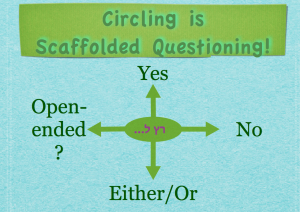


 Our scene went absolutely NOWHERE. The initial query, “Are you tired?” set the docket for the rest of class. We simply and gleefully played with the unlikely possibility of taking a teacher-sanctioned nap in Hebrew class. We explored each actor’s interpretation, one after the next, affording lots of silliness, laughter, and compelling repetition.
Our scene went absolutely NOWHERE. The initial query, “Are you tired?” set the docket for the rest of class. We simply and gleefully played with the unlikely possibility of taking a teacher-sanctioned nap in Hebrew class. We explored each actor’s interpretation, one after the next, affording lots of silliness, laughter, and compelling repetition.

 Processing a new foreign language takes the brain even more time! So teaching youngsters a new language? Whoa! Slow it wayyyyyyy down. Fellow Canadian Comprehensible Input blogger Chris Stoltz offers this rule of thumb on
Processing a new foreign language takes the brain even more time! So teaching youngsters a new language? Whoa! Slow it wayyyyyyy down. Fellow Canadian Comprehensible Input blogger Chris Stoltz offers this rule of thumb on 
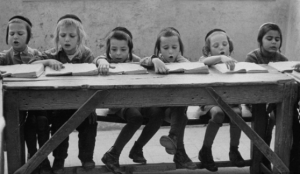

 Humans acquire languages one way only: By understanding messages, aka, Comprehensible Input (Krashen, Foreign Language Education The Easy Way).
Humans acquire languages one way only: By understanding messages, aka, Comprehensible Input (Krashen, Foreign Language Education The Easy Way).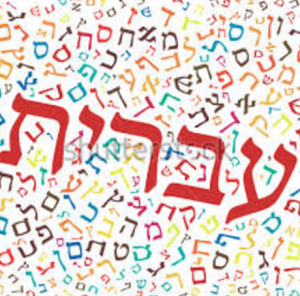 Our rich and diverse liturgical/lifecycle/holiday curricula – hereafter called religious school – explores prayers, songs, religious artifacts, images, communities (including Israel), food, customs, and some texts. Let’s discuss the texts.
Our rich and diverse liturgical/lifecycle/holiday curricula – hereafter called religious school – explores prayers, songs, religious artifacts, images, communities (including Israel), food, customs, and some texts. Let’s discuss the texts.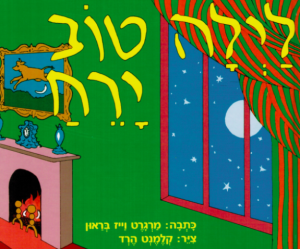 as pre-schoolers (or even earlier these days!) with their native English.
as pre-schoolers (or even earlier these days!) with their native English.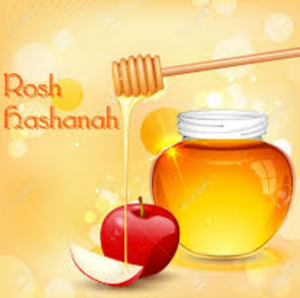 without simultaneously presenting their written Hebrew counterparts in context. But I’m not advocating for isolated word labelling, like we used to see in so many bilingual classrooms in the 80’s – 90’s. I’m talking about contextualized chunks of written Hebrew language, chunks that will be repeated orally throughout the normal course of class.
without simultaneously presenting their written Hebrew counterparts in context. But I’m not advocating for isolated word labelling, like we used to see in so many bilingual classrooms in the 80’s – 90’s. I’m talking about contextualized chunks of written Hebrew language, chunks that will be repeated orally throughout the normal course of class.
 To most American English speakers, languages written in non-Romanized letters seem impossibly difficult. Their very unfamiliarity is off-putting at the least, and constitutes a deal-breaker for many. “How can I possibly learn….? (Fill in the blank: Hebrew, Mandarin, Arabic, Russian, etc.) The writing is downright indecipherable!”
To most American English speakers, languages written in non-Romanized letters seem impossibly difficult. Their very unfamiliarity is off-putting at the least, and constitutes a deal-breaker for many. “How can I possibly learn….? (Fill in the blank: Hebrew, Mandarin, Arabic, Russian, etc.) The writing is downright indecipherable!”

 Stand up.
Stand up.
 For nearly 25 minutes we spent time in Hebrew trying to track down felafel for our hungry protagonist. First she went to Maggiano’s, our Italian venue, hungrily seeking felafel. I accompanied her across the classroom toward the Maggiano’s poster, where a Maggiano’s representative/classmate was waiting, a luscious slice of (plastic) pizza in one fist, a rubbery beige disc of coiled pasta in the other. I did the talking while my actors silently brought our drama to life. As dramatic director, I coached Leah to rub her stomach, stating that she loves felafel, while the class confirmed that no, unfortunately Maggiano’s doesn’t have felafel. It has pizza, and it has spaghetti.
For nearly 25 minutes we spent time in Hebrew trying to track down felafel for our hungry protagonist. First she went to Maggiano’s, our Italian venue, hungrily seeking felafel. I accompanied her across the classroom toward the Maggiano’s poster, where a Maggiano’s representative/classmate was waiting, a luscious slice of (plastic) pizza in one fist, a rubbery beige disc of coiled pasta in the other. I did the talking while my actors silently brought our drama to life. As dramatic director, I coached Leah to rub her stomach, stating that she loves felafel, while the class confirmed that no, unfortunately Maggiano’s doesn’t have felafel. It has pizza, and it has spaghetti.
 I wanted our kids to walk away feeling encouraged. And successful. And smiling. Those were my ‘curricular goals’ from which I decided to backwards-plan. No worries about hi-frequency structures, circling, repetitions, or the like… yet. Just a fun, informal meeting & intro with some back-and-forth Hebrew communication.
I wanted our kids to walk away feeling encouraged. And successful. And smiling. Those were my ‘curricular goals’ from which I decided to backwards-plan. No worries about hi-frequency structures, circling, repetitions, or the like… yet. Just a fun, informal meeting & intro with some back-and-forth Hebrew communication.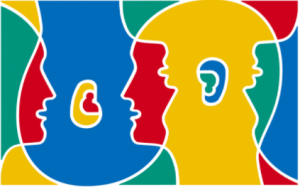
 miliar routines (i.e., greeting/goodbye song) which provide much needed structure for the wee ones. But alas, my classroom is sweaty (no air conditioning); the chairs are hard (transitioning from the rug and plenty of stretching and movement can only help so much!) and the kids are tired, hungry, need a Band-Aid, want a drink, have a tummy ache, just lost a tooth…in short, they find it hard to stay focused. This will change as they grow accustomed to the new school year and schedule, but it means that I can’t expect or push too much…yet. Limited language input, no full-on circling, lots of movement (we did some modified yoga poses) and plenty of props. We picked our favorite (plastic) snacks and using “want” and “looks for,” we pretended to eat them.
miliar routines (i.e., greeting/goodbye song) which provide much needed structure for the wee ones. But alas, my classroom is sweaty (no air conditioning); the chairs are hard (transitioning from the rug and plenty of stretching and movement can only help so much!) and the kids are tired, hungry, need a Band-Aid, want a drink, have a tummy ache, just lost a tooth…in short, they find it hard to stay focused. This will change as they grow accustomed to the new school year and schedule, but it means that I can’t expect or push too much…yet. Limited language input, no full-on circling, lots of movement (we did some modified yoga poses) and plenty of props. We picked our favorite (plastic) snacks and using “want” and “looks for,” we pretended to eat them.